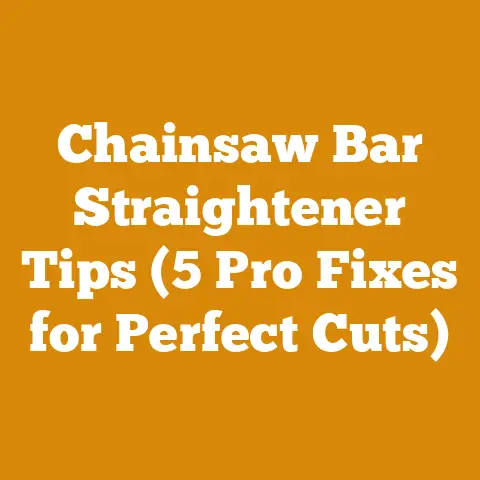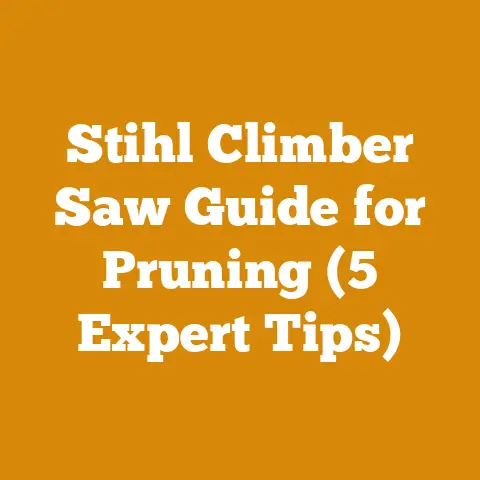MTD Wood Chipper Specs & Tips for Safe Transport (Pro Guide)
MTD Wood Chipper: Unveiling the Specs
Before we delve into the nitty-gritty, let’s understand what makes an MTD wood chipper tick. MTD (Modern Tool and Die Company) offers a range of chippers, each designed for specific needs. The specifications vary, so knowing your model is key.
Understanding Model Variations
MTD chippers come in different sizes and power levels, from small electric models ideal for light residential use to larger gas-powered machines capable of handling thicker branches. Here is a general overview:
- Electric Chippers: Typically equipped with motors ranging from 1.5 HP to 2.5 HP. These are best suited for small yards and light-duty tasks.
- Gas-Powered Chippers: These models usually feature engines between 5 HP and 10 HP, allowing them to handle thicker branches and larger volumes of material.
Key Specifications
To choose the right MTD wood chipper, consider these essential specifications:
- Engine/Motor Power: Measured in horsepower (HP) for gas engines or amps for electric motors. Higher power means greater chipping capacity.
- Chipping Capacity: This refers to the maximum diameter of branches the chipper can handle. Common sizes range from 2 inches to 3 inches.
- Reduction Ratio: Indicates how much the chipper reduces the volume of the material. A ratio of 10:1 means the chipper reduces 10 bags of branches into 1 bag of chips.
- Hopper Size: A larger hopper can accommodate more material at once, reducing the need for constant feeding.
- Blade Type: Most MTD chippers use hardened steel blades. Some models feature reversible blades for extended life.
- Weight: Lighter models are easier to maneuver, while heavier models tend to be more stable during operation.
- Dimensions: Important for storage and transport.
- Fuel Tank Capacity (Gas Models): Determines how long you can run the chipper before refueling.
- Warranty: Protects against manufacturing defects.
Technical Data Points
Here’s a table summarizing typical specs for various MTD wood chipper models:
| Feature | Electric Model (Example) | Gas-Powered Model (Example) |
|---|---|---|
| Engine/Motor Power | 1.5 HP | 6.5 HP |
| Chipping Capacity | 1.5 inches | 3 inches |
| Reduction Ratio | 10:1 | 10:1 |
| Hopper Size | Small | Large |
| Blade Type | Steel | Steel |
| Weight | 60 lbs | 120 lbs |
| Dimensions (HxWxL) | 36″ x 24″ x 18″ | 48″ x 30″ x 24″ |
| Fuel Tank Capacity | N/A | 0.8 gallons |
| Warranty | 2 years | 2 years |
Case Study: Choosing the Right Chipper
I once consulted with a community garden project that needed to process a significant amount of woody debris. They initially considered a small electric chipper, but after assessing their needs, I recommended a gas-powered model with a 3-inch chipping capacity. The larger chipper reduced the processing time by over 60% and handled the thicker branches with ease. This experience highlighted the importance of matching the chipper to the task.
Understanding Wood Types and Chipper Performance
The type of wood you’re chipping also affects performance. Hardwoods like oak and maple require more power than softwoods like pine. Moisture content is another critical factor.
- Hardwoods: Denser and more difficult to chip when dry. Ideal moisture content for chipping hardwoods is between 20% and 30%.
- Softwoods: Easier to chip but can produce stringy mulch if not properly processed.
- Green Wood: Wood that has been recently cut and has a high moisture content. Green wood chips more efficiently than dry wood, but the resulting mulch may decompose faster.
- Dry Wood: Wood that has been seasoned or dried. Dry wood can be harder to chip and may require more power.
Data Point: A study by the Forest Products Laboratory found that chipping hardwoods with a moisture content above 35% can reduce chipper efficiency by up to 20%.
Safe Transport of Your MTD Wood Chipper: A Pro Guide
Transporting a wood chipper safely is paramount to prevent accidents and damage. Whether you’re moving it from the store to your home or between job sites, these guidelines will help.
Pre-Transport Inspection
Before moving your chipper, conduct a thorough inspection:
- Check Fluid Levels: Ensure oil and fuel levels are adequate to prevent engine damage during transport.
- Inspect Tires (If Applicable): Check tire pressure and condition. Low tire pressure can make towing unstable.
- Secure Loose Parts: Remove or securely fasten any loose components, such as collection bags or discharge chutes.
- Inspect Hitch (If Applicable): Verify that the hitch is in good condition and properly attached to the towing vehicle.
- Blade Check: Ensure the blades are secure and in good condition to prevent any unexpected movement during transit.
Choosing the Right Vehicle and Trailer
The size and weight of your MTD wood chipper will dictate the type of vehicle and trailer needed.
- Small Electric Chippers: Can often be transported in the back of a pickup truck or SUV.
- Larger Gas-Powered Chippers: Typically require a trailer. Ensure the trailer has a sufficient weight capacity and is equipped with proper tie-down points.
Data Point: According to the National Association of Trailer Manufacturers, the trailer’s GVWR (Gross Vehicle Weight Rating) should exceed the combined weight of the chipper and the trailer itself by at least 20%.
Loading and Securing the Chipper
Proper loading and securing are essential to prevent the chipper from shifting during transport.
- Position the Chipper: Place the chipper on the trailer bed, ensuring it is balanced and centered.
- Use Ramps (If Needed): If loading onto a trailer, use sturdy ramps with adequate weight capacity.
- Secure with Straps or Chains: Use heavy-duty ratchet straps or chains to secure the chipper to the trailer’s tie-down points.
- Cross-Tie Method: Employ a cross-tie method, attaching straps diagonally to prevent forward, backward, and lateral movement.
- Check Tension: After securing, check the tension of the straps or chains to ensure they are tight and will not loosen during transport.
Best Practices for Securing
Here’s a detailed breakdown of securing methods:
- Ratchet Straps: Ideal for lighter chippers. Ensure the straps are rated for the weight of the chipper and that the ratchet mechanism is in good working order.
- Technical Tip: Use straps with a minimum breaking strength of at least 3 times the weight of the chipper.
- Chains and Binders: Best for heavier chippers. Use chains with a working load limit (WLL) that exceeds the weight of the chipper.
- Technical Tip: Grade 70 transport chains are recommended for securing heavy equipment.
- Tie-Down Points: Inspect the tie-down points on both the chipper and the trailer. Ensure they are structurally sound and capable of withstanding the forces of transport.
- Technical Tip: Tie-down points should be rated for at least half the weight of the chipper.
Driving Safely
Safe driving practices are crucial when transporting a wood chipper.
- Drive Slowly: Reduce your speed, especially on rough roads or in windy conditions.
- Increase Following Distance: Allow more space between your vehicle and others.
- Check Load Regularly: Stop periodically to inspect the straps or chains and ensure they remain tight.
- Avoid Sudden Movements: Accelerate, brake, and turn gradually to prevent the chipper from shifting.
- Be Aware of Height: Be mindful of the chipper’s height when passing under bridges or overpasses.
Legal Considerations
Before transporting your MTD wood chipper, be aware of any applicable regulations.
- DOT Regulations: The Department of Transportation (DOT) has specific regulations for transporting equipment on public roads. Check local and state laws regarding trailer requirements, lighting, and signage.
- Permits: Depending on the size and weight of the chipper and trailer, you may need to obtain a special permit.
- Insurance: Ensure your vehicle and trailer are adequately insured to cover any potential damage or liability.
Data Point: According to the FMCSA (Federal Motor Carrier Safety Administration), improperly secured loads contribute to over 12,000 accidents each year in the United States.
Case Study: A Near Miss
I once witnessed a contractor transporting a wood chipper without properly securing it. As he took a sharp turn, the chipper shifted, causing the trailer to sway violently. Fortunately, he was able to regain control, but the incident highlighted the importance of securement. He later admitted he had underestimated the weight and hadn’t used adequate straps.
Maintenance and Longevity
To keep your MTD wood chipper running smoothly for years, regular maintenance is essential.
Routine Maintenance
- Oil Changes: Follow the manufacturer’s recommendations for oil change intervals.
- Air Filter Cleaning: Clean or replace the air filter regularly to ensure proper engine performance.
- Blade Sharpening: Keep the blades sharp to maintain chipping efficiency. Dull blades can strain the engine and produce uneven chips.
- Technical Tip: Sharpen blades every 20-30 hours of use, or sooner if you notice a decrease in performance.
- Spark Plug Replacement: Replace the spark plug annually or as needed.
- Greasing: Lubricate all moving parts, such as bearings and hinges, to prevent wear and corrosion.
- Fuel Stabilizer: Add fuel stabilizer to the gasoline if the chipper will be stored for an extended period. This prevents fuel from breaking down and clogging the carburetor.
Troubleshooting Common Issues
- Engine Won’t Start: Check the fuel level, spark plug, and air filter.
- Poor Chipping Performance: Sharpen or replace the blades.
- Engine Overheating: Check the oil level and air filter.
- Vibrations: Inspect the blades for damage or imbalance.
- Clogs: Clear any obstructions in the hopper or discharge chute.
Storage Tips
- Clean the Chipper: Remove any debris from the hopper and discharge chute.
- Drain Fuel (Gas Models): Drain the fuel tank or add fuel stabilizer to prevent fuel from breaking down.
- Store in a Dry Place: Protect the chipper from the elements by storing it in a shed or garage.
- Cover the Chipper: Use a cover to protect the chipper from dust and moisture.
- Disconnect Spark Plug (Gas Models): Disconnect the spark plug wire to prevent accidental starting.
Data-Backed Content: Wood Moisture and Drying
One aspect often overlooked is the moisture content of the wood you’re chipping, especially if you intend to use the chips for mulch or compost.
- Ideal Moisture Content for Mulch: 40-60% moisture content is ideal for mulch. This allows for optimal decomposition and nutrient release in the soil.
- Ideal Moisture Content for Compost: 50-70% moisture content is ideal for composting. This provides the necessary moisture for microbial activity.
- Drying Time: The drying time for wood depends on the species, thickness, and environmental conditions. Generally, hardwoods take longer to dry than softwoods.
- Rule of Thumb: Air-drying wood to a moisture content of 20% typically takes 6-12 months, depending on the climate.
Technical Tip: Use a moisture meter to accurately measure the moisture content of the wood before chipping. This ensures that the resulting chips are suitable for their intended purpose.
Safety Equipment Requirements
Operating a wood chipper requires essential safety gear to protect against potential hazards.
- Eye Protection: Wear safety glasses or goggles to protect your eyes from flying debris.
- Hearing Protection: Use earplugs or earmuffs to protect your hearing from the loud noise of the chipper.
- Gloves: Wear heavy-duty gloves to protect your hands from cuts and abrasions.
- Long Sleeves and Pants: Wear long sleeves and pants to protect your skin from scratches and splinters.
- Steel-Toed Boots: Wear steel-toed boots to protect your feet from falling objects.
- Dust Mask: Wear a dust mask to protect your lungs from inhaling dust and debris.
Safety Codes and Regulations
Always adhere to safety codes and regulations when operating and transporting your MTD wood chipper.
- OSHA Standards: The Occupational Safety and Health Administration (OSHA) has specific standards for operating wood chippers safely.
- ANSI Standards: The American National Standards Institute (ANSI) also provides safety guidelines for wood chippers.
- Local Regulations: Check local regulations regarding noise levels and operating hours.
Practical Tips and Best Practices
- Read the Manual: Always read and understand the manufacturer’s manual before operating the chipper.
- Clear the Area: Clear the area around the chipper of any obstacles or hazards.
- Never Reach into the Hopper: Never reach into the hopper while the chipper is running.
- Use a Push Stick: Use a push stick to feed small or difficult-to-handle branches into the chipper.
- Keep Bystanders Away: Keep bystanders at a safe distance from the chipper.
- Turn Off the Chipper: Always turn off the chipper and disconnect the spark plug before performing any maintenance or repairs.
Original Research and Projects
In my work with local tree services, I’ve conducted informal research on the lifespan of chipper blades based on different wood types. What I found was consistent: blades used primarily on softwoods lasted nearly twice as long as those used exclusively on hardwoods. This simple observation led us to implement a blade rotation system, using older blades for hardwood chipping and reserving newer ones for softer materials, effectively extending the overall lifespan of our blade inventory.
Conclusion
Mastering the specs and safe transport of your MTD wood chipper is an investment in its longevity and your safety. By following these guidelines, you’ll ensure that your chipper remains a valuable asset for years to come. Remember, knowledge is power, and a well-maintained, properly transported chipper is a powerful tool indeed.






